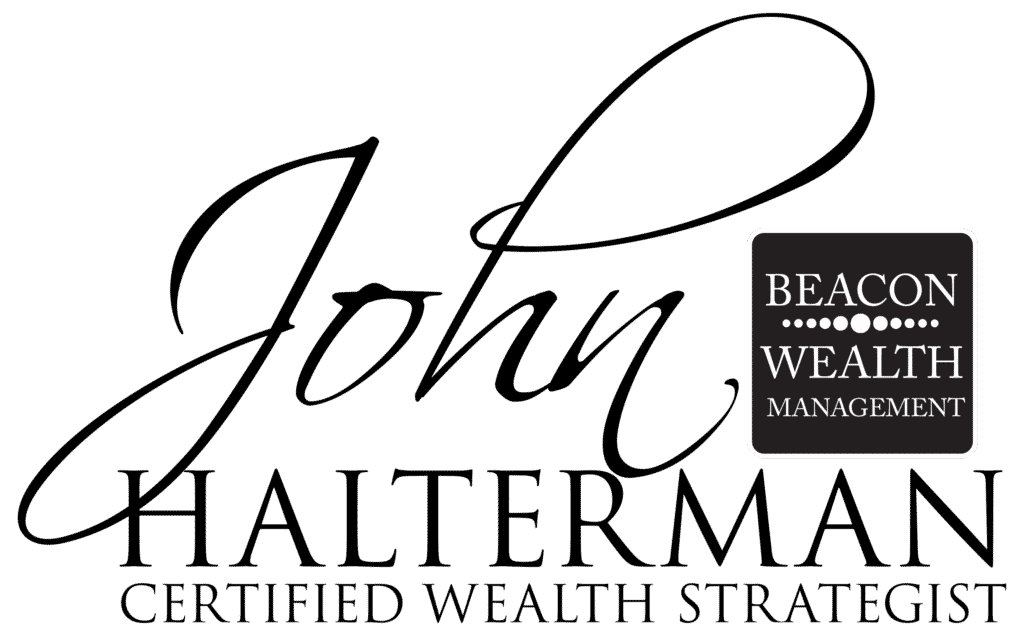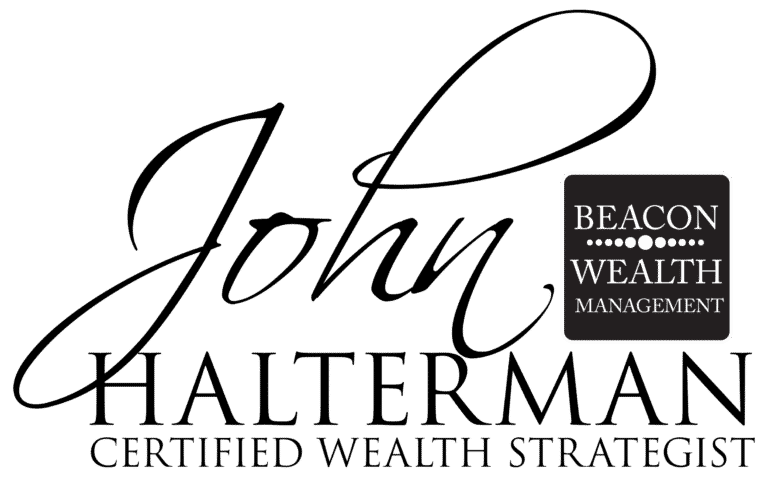Do You Need Help Gathering Up Old 401(k) Accounts? There’s no doubt that 401(k) accounts are an incredible asset to help you reach your retirement savings goals. These employer-sponsored savings plans offer a tax-advantaged way for you to save, often with matching contributions from the employer and multiple investment options. But 401(k)s can become problematic when you change employers, which many Americans do, sometimes more than eleven times throughout their career! If the majority of your previous employers offered a 401(k), how can you keep track of your accounts when you move on to a new job? It’s a challenge to manage all of these accounts and simultaneously stay committed to a coherent investment strategy for your financial future. It’s not an easy task to track growth, manage fees, and stay diversified if your money is in multiple places. More than one-third of Americans have three or more retirement accounts. Is this you? What are your options when it comes to old 401(k)s? What Are Your 401(k) Plan Options? Many people aren’t sure what their 401(k) choices are when they leave a company. When it comes to company-sponsored 401(k) retirement plans, there are four different paths available to you when you leave an employer: 1. Leave The Plan With Your Previous Employer This is the easiest option because it doesn’t require you to do anything. However, it might not be an option for everyone. If your account holds less than $1,000, your employer is allowed to automatically cash out your account when you leave. If your account holds between $1,000 and $5,000, most companies will automatically roll your account into an IRA for you when you leave. Most people need to have over $5,000 in their account to have the option of leaving it in place. There are a few benefits to leaving your money with your previous employer. If you turned 55 before leaving the job, then you can take penalty-free withdrawals before turning 59 ½. With the company plan, you may have lower priced or unique investment options that will no longer be available to you if you move the money. Also, because of federal law, your money is safer from creditors in a 401(k) plan than in an IRA if you go through bankruptcy. Unfortunately, there are some downsides to leaving your money behind when you move on. You will no longer be able to contribute to your plan or take a loan from it. You are limited to the investment options the company offers, which may have higher fees or lower returns than you can find elsewhere. You are also limited in your withdrawal options. Instead of taking a partial withdrawal you may be forced to take the whole amount. If you like having your money in a 401(k), but don’t like your old company’s plan, there is another option. 2. Move Your 401(k) Funds Into Your New Employer’s Plan Not all employers accept rollovers from other plans, so you will have to consult with your new plan administrator to see if this benefit is available to you. People often choose this approach as a way to consolidate assets into one account instead of having multiple small retirement accounts lying around. Most of the advantages of moving your money into your new employer’s plan are the same as keeping it in the old one, such as creditor protection, possible lower-cost investment options, and unique, plan-specific investment options (which vary by plan). Also, if the plan allows, you can take a loan against your account, although it is important to remember that it is due in full when you leave that job. The disadvantages to this approach are also the same as the previous option; you are limited in your investment options and subject to the plan rules, which may have certain transaction limits. 3. Cash Out The Account Although a 2012 report by Transamerica Center for Retirement Studies showed that 25% of unemployed or underemployed workers chose this route, it is almost never a good idea. Withdrawing the funds from your 401(k) account before you are 59 ½ obligates you to pay ordinary income taxes on them as well as a 10% early withdrawal penalty. For someone in the 25% federal income tax bracket paying 7% state income taxes, a $50,000 cash out would cost them $21,000 in penalties and taxes. That means essentially forfeiting 42% of your money so that you can have it now instead of later. The only exception is for people who are 55 or older when they leave their job. They still have to pay income taxes on the money, but the penalty is waived. If you find yourself desperate for money, even a loan with 30% interest would be cheaper than cashing out your 401(k) account (if you are under 55). 4. Rollover Your 401(k) Into An IRA When considering what to do with their old 401(k) accounts, many people choose to roll them over into IRAs, or Individual Retirement Accounts. These accounts differ from 401(k)s in a variety of ways. First of all, when you are an IRA account holder, you are the full owner. Whereas with a 401(k) account, the plan trustee owns the assets. Also, unlike your 401(k), your IRA is not tied to a particular employer, therefore changing jobs has no effect on it. A disadvantage of this approach is that you don’t have as much protection from creditors with an IRA as you do under a 401(k) plan. There are many advantages to having your money in an IRA as opposed to a 401(k) plan. You have much more flexibility with the IRA. You can shop around for low fees and reliable investment options. Instead of being tied to the 20 or so options your company offers, you can invest your IRA in just about anything except life insurance or collectibles. You can even invest your IRA in real estate that you manage through a self-directed IRA. IRAs usually offer much greater flexibility as to who you can name as a beneficiary or contingent beneficiary of the account. When you roll all of your old 401(k) accounts into an IRA, you can keep adding money to the account, no matter who your employer is in the future. With all of your money in one place, it’s much easier to see the big picture of where you stand financially and manage your asset mix. The IRS even allows you to withdraw earnings penalty-free from your IRA before you turn 59 ½, as long as your account has been open for five years and the money is used for qualified expenses, such as buying your first home, higher education, or medical expenses. You also have the option to convert to a Roth IRA, which could save you immensely on taxes in the long run and has even more permissive withdrawal rules and no required minimum distributions. You must be careful when rolling over your 401k to an IRA, as if it not executed as a direct rollover and the funds are sent directly to you, there could be severe tax consequences (your employer could withhold 20% and you would be required to make up the difference to fund the new account) and penalties. How To Find 401(k)s From Previous Employers Now that you know your 401(k) options, it’s time to hunt down all of the accounts you have. The simplest way is to contact the human resources department of your old employer. Not only will they have records of your account, but they will also be able to provide you with the necessary paperwork to make any account changes, such as rolling the money into an IRA. If you’ve kept any old documents, you can refer to old 401(k) statements that will give you contact information and details on your account standing. If you are still unable to obtain account information from previous jobs, you might find what you’re looking for through the National Registry of Unclaimed Retirement Benefits. This database lets you search for any retirement plans registered under your name. Not every employer is listed, but you may be able to find some of your 401(k) accounts through this resource. How to Avoid Taxes When Rolling Over Your Money An important factor to consider when make 401(k) decisions is that of taxes. Funds contributed to a 401(k) are taken out of your paycheck pre-tax, so you want to ensure you are handling the money in a way that will avoid a taxable event. There are multiple methods of transferring funds, and some of these can cause a headache if not handled properly. At Beacon Wealth Management, we want you to spend more time doing what you love and less time keeping track of all of your accounts. We can help you with the details and give you peace of mind that your 401(k) balances are being managed with uninterrupted tax deferred growth. As qualified professionals, we will do a complete analysis of your retirement assets and then come up with a plan to find the option that is best for you. If you have an old 401(k) account, contact me today by calling (304) 626-3900 or emailing jhalterman@bwmwv.com. Please be sure to speak to your advisor to carefully consider the differences between your company retirement account and investment in an IRA. These factors include, but are not limited to changes to availability of funds, withdrawals, fund expenses, fees, and IRA required minimum distributions.

-
John Halterman
Let’s Have a Conversation
Request Your 15 Minute Discovery Call Today!
Just like you don’t trust just anyone with your savings, we can’t help everyone that wants to work with us. In this call, we’ll make sure we are a good fit for one another.
Check out the background of firms and investment professionals on FINRA’s BrokerCheck.
Securities offered through Cambridge Investment Research, Inc., a broker-dealer, member FINRA/SIPC. Advisory services offered through Cambridge Investment Research Advisors, Inc., a Registered Investment Adviser. Beacon Wealth Management operates independently of Cambridge. This communication is strictly intended for individuals residing in the states of WV, PA, OH, MD, NC, SC, TX, FL, NY, DE, KY, CA and WI. No offers may be made or accepted from any resident outside the specific state(s) referenced.
- 2024 Beacon Wealth Management
- All Rights Reserved


